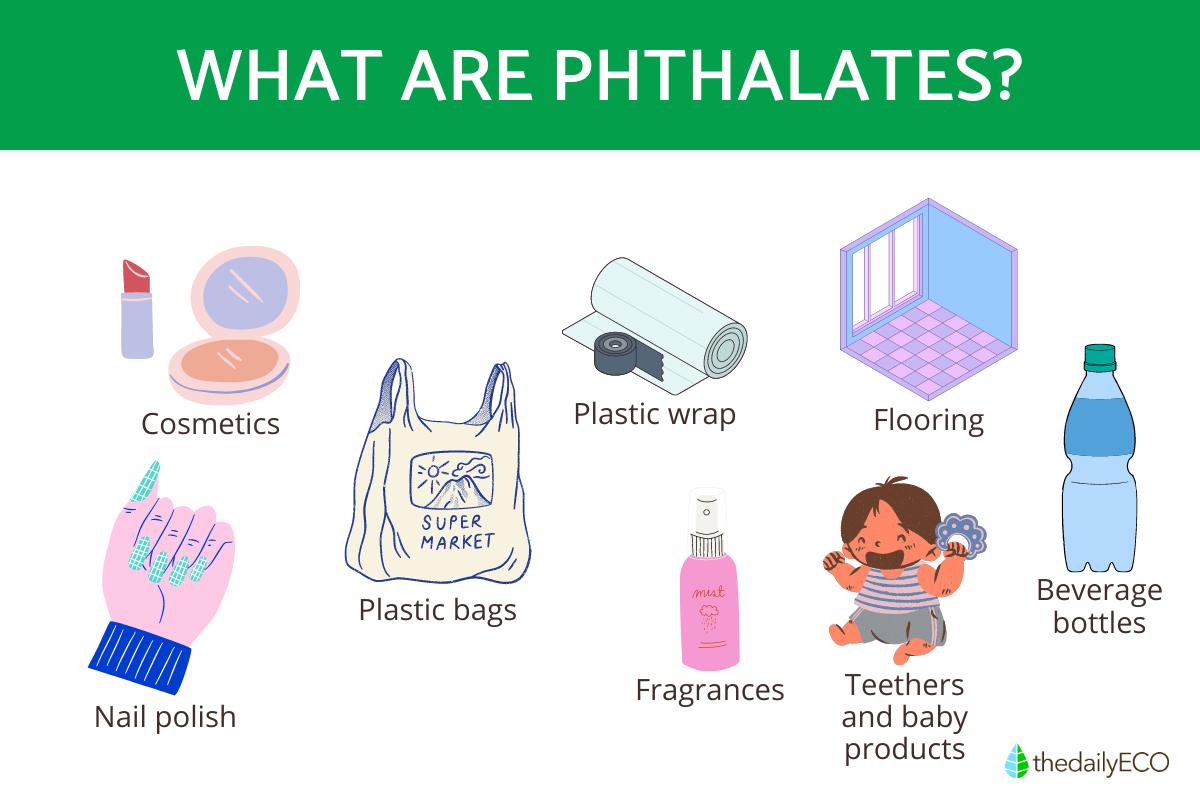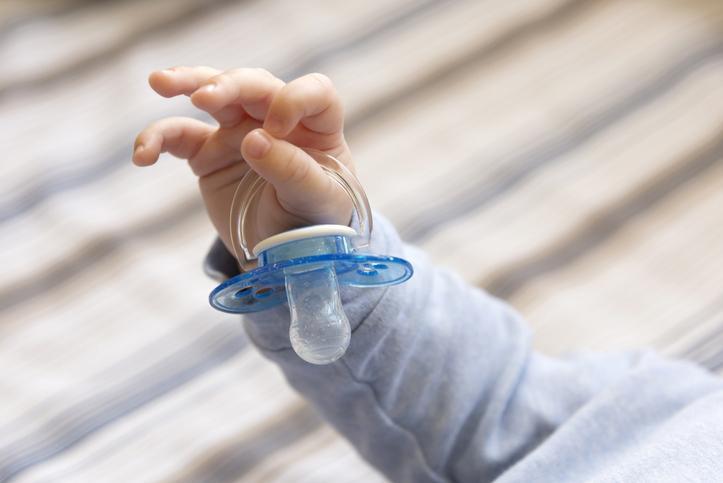What Do Phthalates Do to Your Body?


Phthalates are a group of chemical compounds used widely in various everyday products that have garnered attention for their potential health impacts. Imagine reaching for your favorite lotion, cuddling your baby's soft toy, or grabbing a refreshing drink, all seemingly harmless actions. But what if these everyday items harbored a hidden threat? These chemicals, found in hundreds of common products, are linked to concerning health effects due to their ability to disrupt hormones.
In this article from thedailyECO we will explain what phthalates are, how they affect you, and where to find them.
What are phthalates?
Phthalates (pronounced THAL-ates) are a group of man-made chemicals used to soften and increase the flexibility of plastics. They are widely used in various consumer and industrial products.
Phthalates are chemicals made from aromatic diesters, specifically from ortho-phthalic acid or terephthalic acid. These chemicals are light-colored, oily liquids that don't mix well with water and don't evaporate easily. Di(2-ethylhexyl) phthalate (DEHP) is the most common type of phthalate.
Phthalates are commonly used in the plastics industry to make rigid plastics, like polyvinyl chloride (PVC), more flexible. These plastics are found in many everyday items, such as tubes, valves, toys, and pacifiers.
In the past 15 years, phthalates have been studied because they are linked to various health problems in humans and animals. The Environmental Protection Agency (EPA) has identified DEHP as an endocrine disruptor, meaning it can mess with the body's hormone systems. This happens because phthalates activate certain proteins that control many cell functions in our bodies.
Discover more about the seven types of plastic in this informative article.

Health effects of phthalates
The first evidence of the toxicity of phthalates on human health is relatively recent, with ongoing research.
It was only about fifteen years ago that scientists began to seriously study these chemical compounds. Since then, research has shown that phthalates can have various harmful effects on both lab animals and humans. These toxic effects are mainly linked to phthalates and their breakdown products, known as metabolites.
Studies have found that when phthalates break down quickly in certain animal organs, like the lungs and intestines, it leads to serious health problems. Also, phthalates have a structure similar to some human hormones, particularly estrogen. This can lead to them interfering with the body's natural hormonal balance.
Some of the most significant health effects of phthalates include:
- Obesity
- Lower levels of sex hormones in men
- Poor semen quality
- Endometriosis in women
- Developmental problems in male genitals
- Early puberty in girls
- Potential behavioral issues in both boys and girls
- Increased risk of developing asthma or allergies
- Cancer
it is important to note that there are many different types of phthalates, and their health effects might vary. Furthermore, the severity of potential health problems likely depends on the amount and length of time someone is exposed to phthalates.
To detect phthalates in the body and understand their impact on health, doctors often measure phthalate metabolites in urine. This process is called biomonitoring. More and more countries are using biomonitoring to study phthalates as a way to prevent and detect potential health risks in their populations.
It's important to note that these are potential concerns, and the evidence is not always conclusive. However, if you're interested in minimizing your exposure to phthalates, you can find some tips in the next section.
Have you heard of plastic pellets? Discover why they are harmful to your health and the environment in this article.

Where are phthalates most commonly found?
Phthalates are surprisingly widespread in our daily lives. The main way people are exposed to phthalates is through diet. This includes eating food and drinking water or other beverages stored in plastic containers. However, this is not the only way, some common sources include:
- Food packaging: look for recycling symbols that don't include the number 3 (PVC) or 7 (BPA).
- Children's toys: Choose phthalate-free options whenever possible, especially for teething toys that go in the mouth.
- Fragrances: Many perfumes, colognes, and lotions contain phthalates to help disperse the scent.
- Nail polish: Some nail polishes, especially older formulas, might contain phthalates.
- Cosmetics: While less common than in the past, some lipsticks, hair products, and other cosmetics may contain phthalates.
- Shower curtains: Vinyl shower curtains can harbor phthalates. Consider fabric alternatives.
- Flooring: Some types of vinyl flooring might contain phthalates.
- Building materials: In some cases, phthalates might be present in building materials like caulking or adhesives.
It's important to remember that phthalate use is not always listed on product labels. However, by being aware of common sources and looking for phthalate-free alternatives when possible, you can take steps to minimize your exposure.
Learn about the dangers of plastics ending up in the ocean. Explore more in this other article.

How to find phthalate-free products?
Due to the wide variety of products that contain phthalates, it is essential to be aware of their consumption and make it a routine to check the labels of items and materials that might contain these chemicals.
In recent years, the European Union has established various regulatory frameworks to control and eliminate the use of major phthalates. Key regulations include:
- The use of phthalates in cosmetics has been banned (EC Laws 36/2003, EC 93/2004, EC 90/2005, and EC 2/2009).
- The presence of phthalates in paints and varnishes has been restricted.
- The use of phthalates in the food industry is regulated (EC Law 19/2007).
- The sale and production of toys and other products intended for children that contain phthalates are prohibited (EC Law 84/2005).
Despite these regulations, not all products come from the European Union, and some imported goods might still contain phthalates. Therefore, it is important to regularly read product labels to ensure they do not contain phthalates. Also, opt for products from reputable brands and sources known to follow strict safety standards.
If you want to read similar articles to What Do Phthalates Do to Your Body?, we recommend you visit our Health and science category.
- Ramos, JJ; Esteban, M. & Castaño, A. (2015) Exposure to phthalates in children and adults. Environmental Health Magazine, special Papers presented at the IX National Conference on Endocrine Disruptors - Madrid . Volume pp: 65-85.
- García, F.; Bustamante LP & García, M. (2013) Presence of phthalates in beverages in the state of Mexico. Ibero-American Journal for Educational Research and Development (RIDE) , Volume XI.
- Pérez, L. et al., (2017) Characteristics and uses of phthalates. Mexican journal of biotechnology . Volume 2 (1), pp: 145-154.
- Bustamante, P. et al., (2001) Phthalates and health effects. International Journal of Environmental Pollution . Volume 17 (4).








